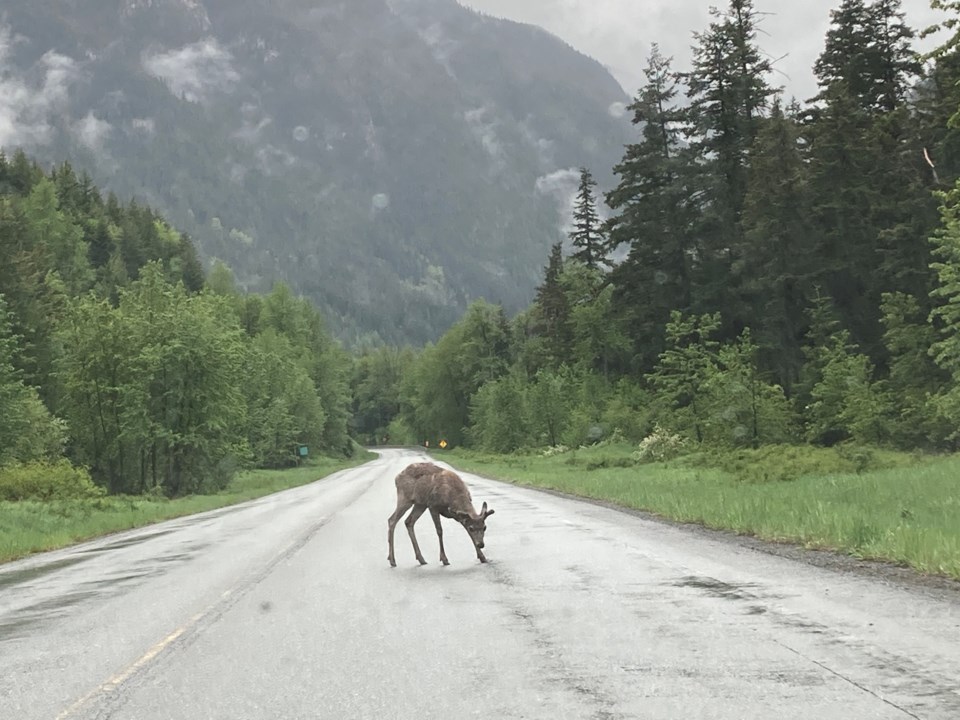The Canadian Olympic Committee has been working alongside several First Nations to create a bid for the 2030 Winter Olympics for several months now, and discussions about what amenities might be delivered with such an event are starting to ramp up.
If the bid is successful, the Olympics would be held again in Whistler and Vancouver, and potentially Sun Peaks and Kamloops, which are expected to be announced as additional host municipalities in the coming months.
Admittedly, I’m pretty excited to see my hometown and the ski hill I grew up on being part of the Olympics, but I can’t help but worry a little about the state of Highway 99 north of Whistler if the Olympics were to come through.
Having moved to Whistler from Kamloops, I often drive on the highway, and the road is not exactly what I would call an easy drive. With numerous switchbacks, single-lane bridges, blind corners, minimal passing lanes and extremely hazardous winter conditions, the highway from Whistler to Kamloops is one of the roughest in the province.
Every year there are stories of crashes on the 99 between Whistler and Cache Creek with numerous people losing their lives. During the atmospheric river last fall, five people tragically lost their lives to a rockslide on the road, and what scares me is that it just as easily could have been you or me.
My worry is if we were to have the Olympics tomorrow, the 99 would be overwhelmed in a matter of hours with all the traffic attempting to head from the Whistler events to those in Sun Peaks and back again. During the middle of winter, I can imagine the slew of dreadful stories if nothing is done to improve the road conditions.
But the Olympics offer an excellent opportunity to improve the highway from Whistler to Cache Creek, much like the Sea to Sky highway upgrades did before the 2010 Olympics.
In the lead-up to the Olympics, the province undertook a $600-million upgrade to the highway between Vancouver and Whistler. This has remained one of the lasting positive legacies of the event.
The highway was made much safer by utilizing passing lanes and straightening out the rough corners. Prior to the upgrades, the Sea to Sky highway had a reputation for being a dangerous road, with numerous accidents and fatalities every year. After it was upgraded, its accidents and fatalities declined by more than 66 per cent. The highway went from about 200 crashes a year down to about 70.
The upgraded road also helped Squamish and Whistler become much more attractive places to live for residents of Metro Vancouver (though whether that is good or bad is another topic entirely). The main thing is that numerous lives have been saved because the province put in the investment, which I’d argue has paid itself off several times over in economic growth in the region.
Precisely what upgrades are needed on Highway 99 between Whistler and Cache Creek is a conversation on its own, but with only eight years to go before 2030, that conversation needs to happen quickly.
As a region, we need to figure out which bypasses need to be built, where passing lanes should be added, and what exactly should be done with the 99 through Whistler and the Pemberton Valley.
Eight years is a tight timeline to upgrade a highway these days; there needs to be consultation with First Nations, environmental reviews, and the construction itself needs to take place, all of which are timely endeavours.
The importance of this work was highlighted by the wildfires and floods B.C. experienced last year.
During the natural disasters that battered the province, Highway 99 offered one of two routes that remained a viable option for travelling to and from the Lower Mainland to the Interior. While the other routes were devastated by flooding or were closed during the wildfires, the amount of traffic on the Sea to Sky increased substantially.
As climate change is expected to worsen in Canada, natural disasters like those that hit the province in 2021 could become more prevalent. Fixing up the highway is just one step the province can take in being prepared for another disaster.




